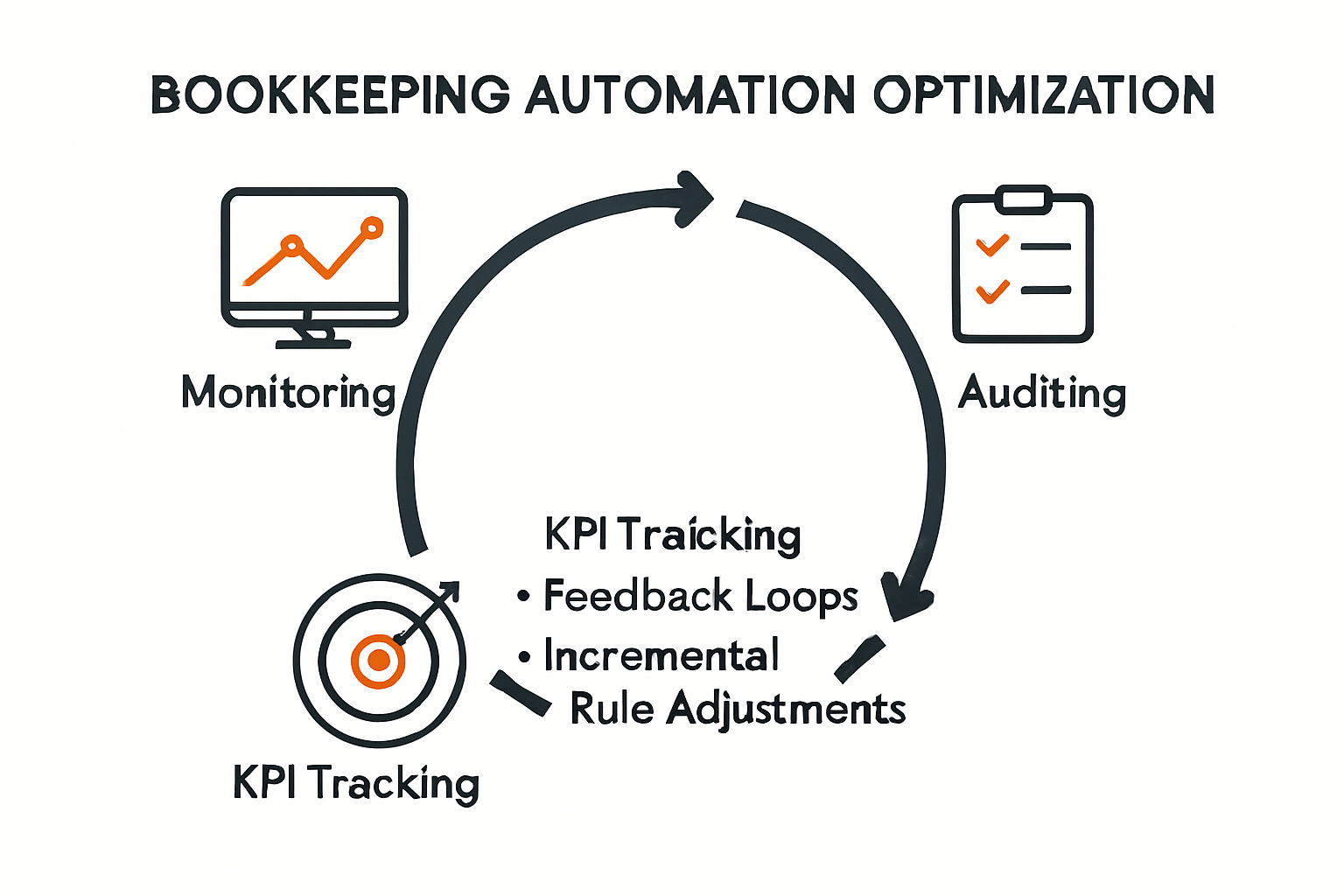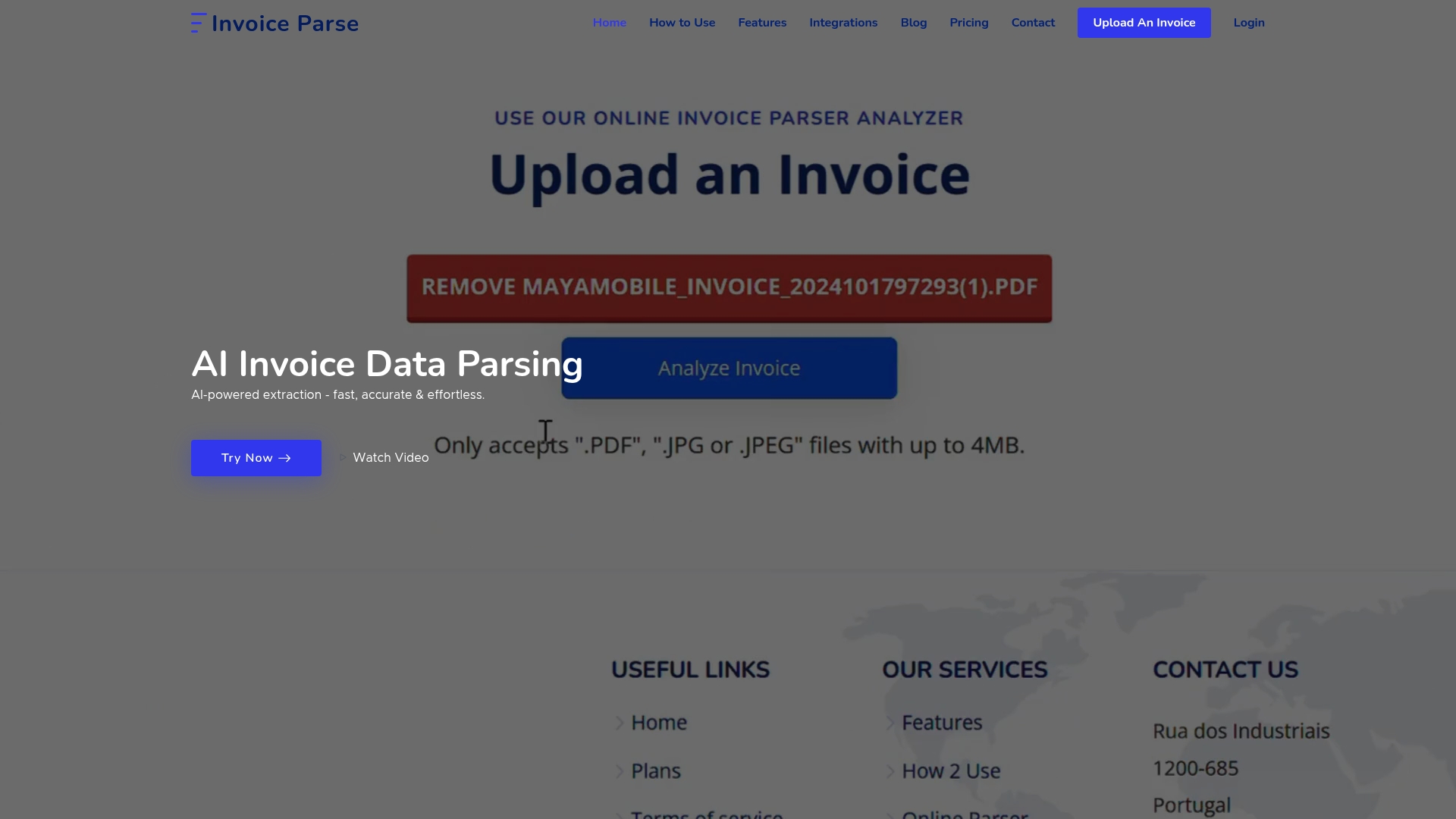Bookkeeping has always been viewed as a tough, time-consuming chore—stacks of receipts, endless spreadsheets, and hours lost to data entry. Yet here is the shocker. Automating bookkeeping tasks can actually reduce manual work by up to 40 percent, freeing teams for bigger priorities. The real surprise is that automation is not just about brute efficiency. It is the key to unlocking real-time insights, near-perfect accuracy, and fresh confidence about your financial future.

How to Automate Bookkeeping: Simple Steps for 2025
Table of Contents
- Understanding Bookkeeping Automation Benefits
- Choosing the Right Automation Tools for Your Team
- Practical Steps to Automate Bookkeeping Tasks
- Tips to Maximize Accuracy and Security
Quick Summary
| Takeaway | Explanation |
|---|---|
| Automate to Reduce Manual Tasks | Automating bookkeeping can cut related tasks by up to 40%, enhancing productivity. |
| Select Tools Based on Needs | Evaluate compatibility, scalability, and user-friendliness to choose suitable automation tools. |
| Map Workflows Before Automation | Document current financial processes to identify tasks suitable for automation and improve efficiency. |
| Implement Robust Internal Controls | Establish internal controls to minimize errors and enhance the reliability of your automated systems. |
| Continuous Monitoring is Essential | Regularly check automated processes for accuracy and adapt to evolving business needs. |
Understanding Bookkeeping Automation Benefits
Bookkeeping automation represents a transformative approach to financial management that goes far beyond simply replacing manual tasks. It fundamentally reshapes how businesses handle their financial data, offering unprecedented efficiency and accuracy in financial record keeping.
The Economic Impact of Automated Bookkeeping
Automated bookkeeping systems deliver substantial economic advantages for businesses of all sizes. Research from Number Analytics reveals that businesses can reduce bookkeeping-related tasks by up to 40%, freeing critical personnel to focus on strategic financial planning. This dramatic time savings translates directly into cost reduction and increased operational productivity.
The precision of automated systems dramatically minimizes human error. Traditional manual bookkeeping methods are prone to miscalculations, data entry mistakes, and inconsistent record keeping. Automated solutions eliminate these risks by implementing consistent data processing protocols and advanced error checking mechanisms.
Real-Time Financial Insights and Cash Flow Management
One of the most compelling benefits of bookkeeping automation is the ability to generate real-time financial insights. The World Financial Review highlights that automated systems enable instantaneous tracking of accounts payable and receivable, providing businesses with up-to-the-minute cash flow visibility.
This continuous financial monitoring allows companies to make more informed decisions quickly. Managers can access comprehensive financial dashboards, understand spending patterns, identify potential cash flow constraints, and develop proactive financial strategies. The speed and accuracy of these insights give businesses a significant competitive advantage.
Enhanced Compliance and Reporting
Bookkeeping automation significantly simplifies regulatory compliance and financial reporting. Automated systems can be programmed to adhere to specific accounting standards, track regulatory changes, and generate compliant reports automatically. This reduces the risk of penalties associated with incorrect financial reporting and minimizes the administrative burden on financial teams.
Moreover, these systems create comprehensive audit trails, documenting every financial transaction with unprecedented detail. This transparency not only satisfies regulatory requirements but also provides a robust framework for internal financial governance.
To explore more about how AI can transform your invoice processing, check out our comprehensive invoice automation guide.
As businesses continue to evolve in an increasingly digital landscape, bookkeeping automation emerges not just as a technological upgrade, but as a strategic necessity. By embracing these advanced solutions, companies can transform their financial operations, reduce operational costs, minimize errors, and create a more agile and responsive financial management ecosystem.
Choosing the Right Automation Tools for Your Team
Selecting the appropriate bookkeeping automation tools requires strategic planning and a comprehensive understanding of your business’s unique financial management needs. The right technology can transform your financial processes, but choosing incorrectly can lead to inefficiencies and wasted resources.
Assessing Your Specific Bookkeeping Requirements
Research from the Accounting Professor emphasizes the importance of conducting a thorough assessment of your organizational needs before implementing any automation solution. This involves carefully analyzing your current bookkeeping workflows, identifying pain points, and determining which specific tasks would benefit most from automation.
Key considerations include transaction volume, complexity of financial reporting, integration requirements with existing systems, and the technical proficiency of your team. Small businesses might require different automation capabilities compared to large enterprises with more complex financial ecosystems. Consider factors such as scalability, user-friendliness, and the potential for future growth.
Evaluating Software Compatibility and Integration
Universal Accounting School recommends prioritizing software that seamlessly integrates with your existing business tools. Compatibility is crucial for maintaining data consistency and ensuring smooth information flow across different departments.
Look for automation tools that offer:
- Comprehensive API connections to popular accounting platforms
- Flexible export and import capabilities
- Real-time synchronization features
- Robust security protocols
- Customizable reporting options
Additionally, assess the software’s ability to handle multiple currencies, tax regulations, and industry-specific accounting requirements. The goal is to find a solution that not only automates tasks but also provides meaningful insights into your financial performance.
Implementation and Team Adaptation Strategies
Ideal Schools research highlights the critical importance of gradual implementation and comprehensive team training. Automation is not just about technology but also about helping your team adapt to new workflows.
Develop a phased implementation approach that allows your team to incrementally learn and integrate the new tools. Provide extensive training sessions, create detailed documentation, and establish a support system to address potential challenges. Consider allocating dedicated resources for initial setup and ongoing technical support.
Learn more about advanced invoice data extraction techniques to complement your bookkeeping automation strategy.
Remember that successful bookkeeping automation is an ongoing process. Continuously evaluate the performance of your chosen tools, gather feedback from your team, and be prepared to make adjustments. The most effective automation solutions are those that evolve alongside your business, providing flexibility, efficiency, and strategic financial insights.
To help you compare key factors when evaluating bookkeeping automation tools, here’s a table summarizing must-have features and considerations:
| Feature/Consideration | Importance | Description |
|---|---|---|
| Compatibility & Integration | High | Works with existing systems, APIs, and current business software |
| Scalability | High | Grows with business size and transaction volume |
| User-Friendliness | Medium | Easy for team to adopt and operate |
| Real-Time Synchronization | High | Instant updates and data consistency |
| Security Protocols | High | Encryption, access control, and user permissions |
| Reporting & Customization | Medium | Customizable financial reports and data exports |
| Training & Support | High | Resources, documentation, and accessible support for implementation |
Practical Steps to Automate Bookkeeping Tasks
Transforming your bookkeeping processes through automation requires a strategic and methodical approach. By breaking down complex financial tasks into manageable, automatable components, businesses can dramatically improve efficiency and accuracy.
Identifying and Mapping Current Workflows
NetSuite’s accounting automation guide recommends beginning with a comprehensive analysis of existing bookkeeping workflows. This critical first step involves meticulously documenting each financial process, from invoice processing to expense tracking, and identifying repetitive tasks that consume significant manual labor.
Start by creating detailed workflow diagrams that highlight:
- Transaction recording processes
- Recurring monthly reconciliation tasks
- Expense categorization methods
- Reporting and data compilation procedures
Carefully examine each workflow to pinpoint areas with high potential for automation. Look for tasks characterized by repetitive data entry, standardized processes, and predictable patterns.
Implementing Systematic Automation Strategies
Research from a recent machine learning study suggests implementing automation through a phased approach that gradually introduces technological solutions. Begin with low-complexity tasks and progressively advance to more intricate financial processes.
Key automation strategies include:
- Automated bank transaction categorization
- Scheduled invoice processing
- Real-time expense tracking
- Automatic reconciliation of financial statements
- Digital receipt management and storage
Select tools that offer robust integration capabilities with your existing accounting systems. Prioritize solutions that provide:
- Advanced data extraction features
- Machine learning-powered accuracy improvements
- Comprehensive reporting functionalities
- Secure cloud-based storage
To clarify the process of automating bookkeeping tasks, here’s a table outlining the main steps and objectives:
| Step | Objective | Example Tools/Actions |
|---|---|---|
| Map Current Workflows | Identify repetitive/manual processes | Workflow diagrams, process mapping |
| Select Suitable Tasks for Automation | Prioritize tasks based on automation potential | Automate data entry, reconciliations |
| Choose and Integrate Automation Tools | Implement appropriate accounting automation software | Cloud platforms, APIs, data connectors |
| Train Staff and Roll Out in Phases | Ensure effective adoption and minimal disruption | Staff training, documentation |
| Monitor, Optimize, and Audit Regularly | Maintain accuracy and adapt to process changes | Periodic reviews, KPI checks, audits |
Continuous Monitoring and Process Optimization

Automation is not a one-time implementation but an ongoing refinement process. Learn more about advanced data extraction techniques to enhance your bookkeeping automation strategy.
Develop a systematic approach to monitoring and improving your automated workflows:
- Regularly audit automated processes for accuracy
- Collect feedback from accounting team members
- Track key performance indicators
- Update automation rules based on changing business needs
- Invest in continuous training for team members
Successful bookkeeping automation requires a balance between technological solutions and human oversight. While automation can dramatically reduce manual work, skilled professionals remain crucial in interpreting results, managing exceptions, and providing strategic financial insights.
Remember that the goal of automation is not to replace human expertise but to empower financial professionals to focus on higher-value analytical and strategic tasks. By carefully implementing and continuously refining automated bookkeeping processes, businesses can achieve unprecedented levels of efficiency, accuracy, and financial intelligence.
Tips to Maximize Accuracy and Security
In the digital age of bookkeeping, maintaining high levels of accuracy and security is paramount. Automated systems offer tremendous potential, but they require strategic implementation and ongoing vigilance to ensure reliable financial management.
Implementing Robust Internal Controls
Research from the Phoenix Strategy Group reveals that artificial intelligence can significantly enhance bookkeeping accuracy by detecting transaction patterns and flagging unusual activities. To maximize system reliability, businesses must develop comprehensive internal control strategies.
Key internal control measures include:
- Segregation of financial duties
- Multi-level authorization protocols
- Regular system access audits
- Comprehensive user permission management
- Detailed transaction tracking logs
Establish clear guidelines for data entry, review processes, and verification procedures. Create a systematic approach that requires multiple checkpoints and cross-referencing to minimize potential errors or fraudulent activities.
Advanced Security and Compliance Strategies
A critical research paper by Soheil Saadat emphasizes the importance of implementing rigorous controls over financial spreadsheets and automated systems. This involves developing sophisticated version control, change tracking, and access management protocols.
Consider implementing:
- Encryption for sensitive financial data
- Regular security patches and software updates
- Comprehensive backup and recovery systems
- Advanced multi-factor authentication
- Continuous monitoring of system access and transactions
Ensure that your automated bookkeeping tools comply with relevant financial regulations and industry standards. Regularly review and update security protocols to address emerging technological risks.
Continuous Monitoring and Error Prevention
NetSuite’s bookkeeping optimization guide recommends a proactive approach to maintaining bookkeeping accuracy. This involves integrating business bank accounts and credit cards directly with accounting software to reduce manual data entry errors.
Develop a routine that includes:
- Daily verification of bank feed connections
- Weekly account reconciliations
- Monthly comprehensive financial review
- Quarterly system performance audits
- Annual comprehensive security assessment
Learn more about advanced invoice data extraction techniques to further enhance your bookkeeping security strategy.
Remember that technology is a tool, not a complete solution. Human oversight remains crucial in detecting nuanced irregularities that automated systems might miss. Train your team to work collaboratively with automated tools, maintaining a critical and analytical approach to financial data management.
By combining advanced technological solutions with strategic human oversight, businesses can create a robust, secure, and accurate bookkeeping ecosystem that supports sustainable financial growth and compliance.

Frequently Asked Questions
What are the main benefits of automating bookkeeping?
Automating bookkeeping can reduce manual tasks by up to 40%, provide real-time financial insights, enhance compliance, and improve accuracy through advanced error-checking mechanisms.
How do I choose the right automation tools for my bookkeeping needs?
Evaluate your specific requirements by assessing transaction volume, integration capabilities, and your team’s technical proficiency. Look for tools that offer scalability, compatibility, and user-friendliness to suit your business.
What practical steps should I follow to automate my bookkeeping tasks?
Start by mapping your current workflows to identify repetitive tasks. Select suitable automation strategies and tools for your needs, and provide training for your team to ensure smooth implementation while maintaining oversight and continuous monitoring.
How can I ensure the accuracy and security of my automated bookkeeping system?
Implement robust internal controls, such as segregation of duties and regular audits. Use encryption and establish multi-factor authentication for data security. Regularly monitor and update your systems to prevent errors and ensure compliance.
Stop Wasting Hours on Manual Invoice Data Entry: Your Fast Track to Automated Bookkeeping
If you are struggling with endless manual data entry and chasing real-time results, you are not alone. The article highlights how outdated processes increase human error and slow down growth. Automating your bookkeeping is the answer. Imagine extracting key invoice details like vendor names, dates, and totals instantly without templates or training. Invoice Parse brings you exactly that with an easy drag-and-drop interface and AI-powered accuracy. Instantly convert PDFs or images into structured data and send it to your favorite tools with just a few clicks. You get real-time financial insights with fewer mistakes and zero unnecessary stress.

Ready to experience the next level of bookkeeping automation? Take action now and see how Invoice Parse works for your business. Start your journey to error-free books, instant reports, and more time for what really matters. Your team deserves bookkeeping that works as hard as you do. Try Invoice Parse today and unlock your financial clarity.
